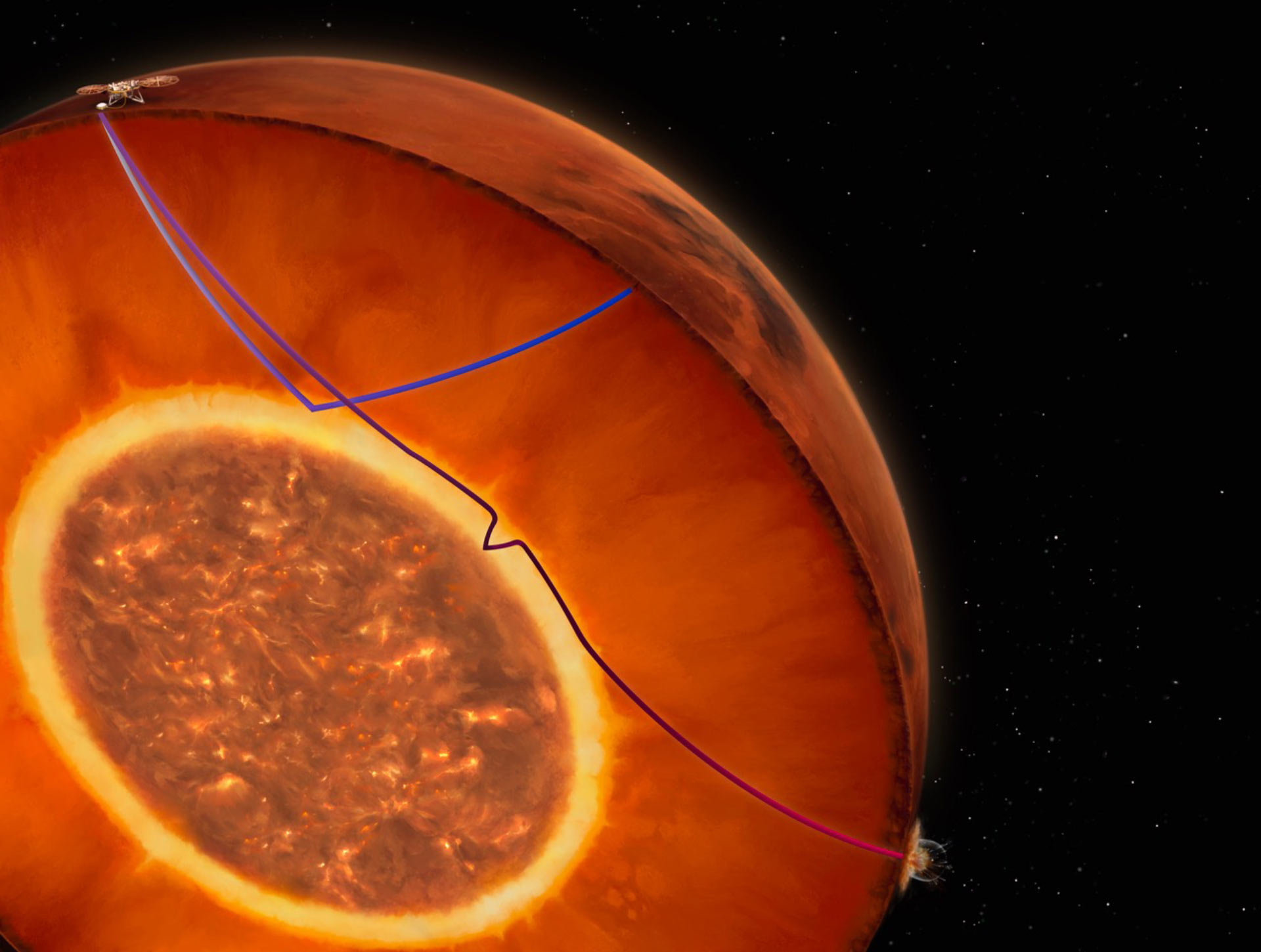In a surprising turn of events, recent studies have provided fresh insights into the intriguing mystery of Mars’ core. Drawing on data from a significant meteorite impact recorded by NASA‘s InSight lander in 2021, researchers have painted a clearer picture of the Red Planet’s core and the molten layer encasing it.

Revisiting the Martian Enigma
When the InSight lander began its operations on Mars in 2018, it aimed to study seismic waves created by marsquakes, with the goal of understanding the planet’s internal composition. Initial estimates from InSight’s readings suggested a perplexingly large and low-density core for Mars, with an unexpected abundance of lighter elements paired with its liquid iron. These findings, dubbed as “bordering on the impossible”, stirred the scientific community.
Meteorite Impact: The Game Changer
The enigma started to unfurl when a meteorite impacted Mars in September 2021. This impact generated seismic waves that provided invaluable data for scientists. The new waves captured by InSight, especially from this distant meteorite impact, suggested that the core of Mars is actually smaller and denser than initially estimated.
Two concurrent studies now deduce that Mars’ core likely spans a radius of about 1,013-1,060 miles. Moreover, the core’s lighter element content is more in line with plausible scientific models, diminishing the earlier discrepancies. Surrounding this core is an intriguing layer of molten silicates, approximately 90 miles thick.
Unveiling the Molten Blanket
This molten layer, previously unknown to researchers, has been a significant contributor to the misconceptions about Mars’ core. While its presence has been established, the studies differ on its exact composition. Some scientists propose a dense layer rich in sulfur and oxygen, while others believe it’s less dense with fewer of these elements.
This molten layer’s role is multifaceted. Not only does it possibly act as a thermal insulator, but it may also be a factor behind Mars’ lack of a planetary magnetic field. This magnetic field absence contrasts with Earth, where the interplay between its solidifying inner core and liquid outer core generates a magnetic field.
Furthermore, the characteristics of this molten layer might shed light on Mars’ geological phenomena. It could potentially fuel the planet’s volcanic activities, like those that possibly formed Tharsis, the solar system’s largest volcanic structure.
Redefining Martian Studies
With the discovery of this molten layer, there’s a pressing need to reevaluate previously held notions about Mars. This newfound knowledge beckons a revisiting of the seismic records and other geophysical data, potentially opening doors to more revelations about Mars’ mantle and core.
These captivating findings are detailed in the esteemed journal, Nature, and they underscore the dynamic nature of Martian research, revealing how every piece of data can reshape our understanding of the Red Planet.










